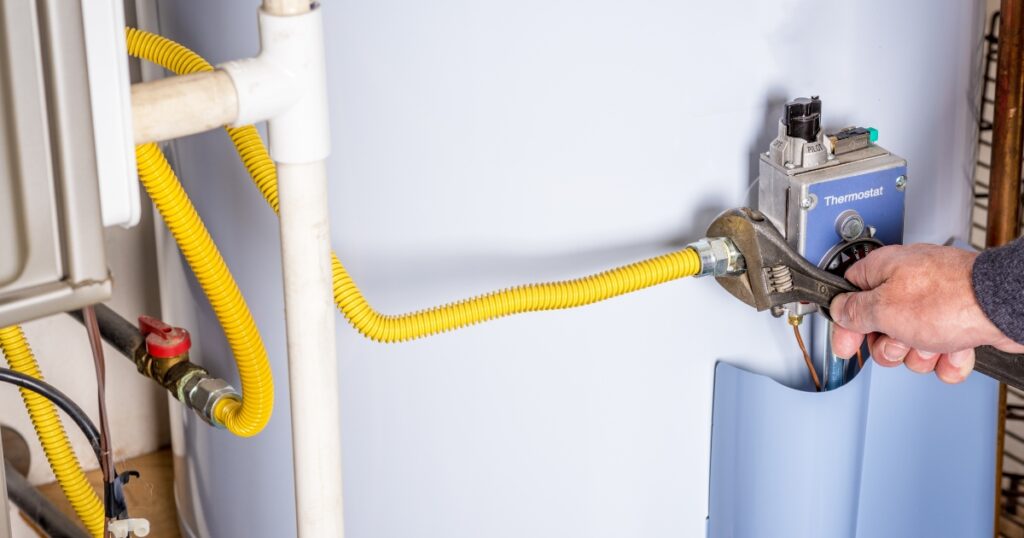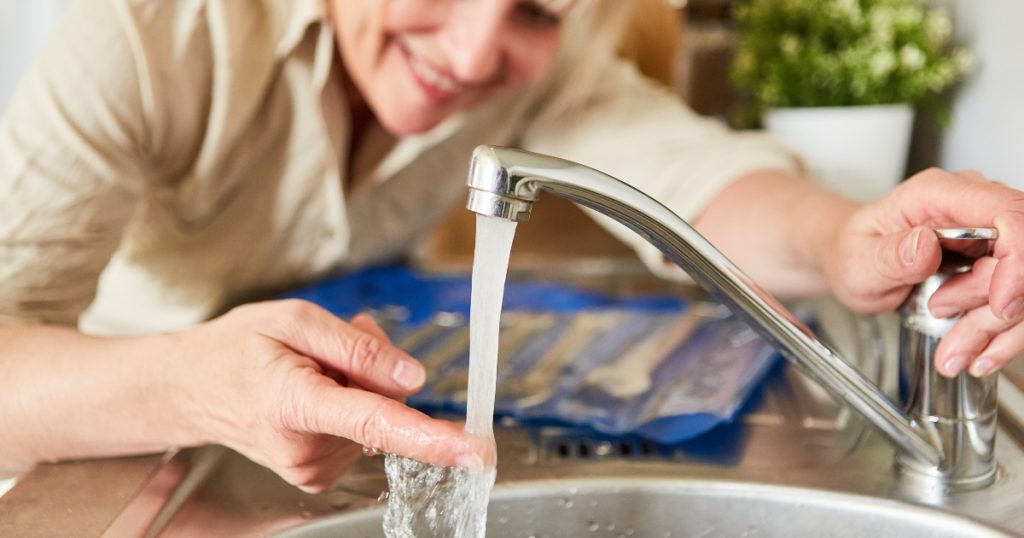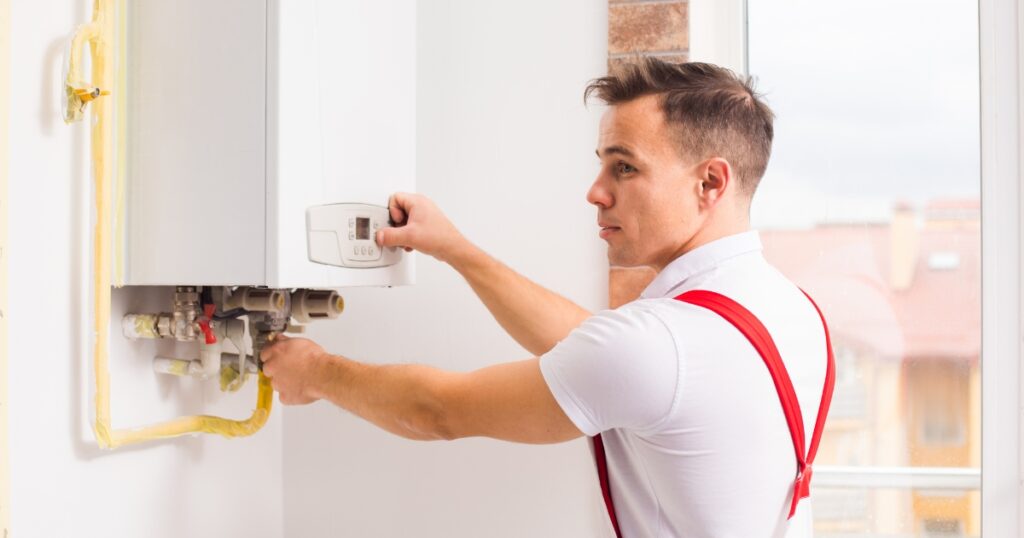Ever found yourself suddenly fretting that your hot water system might be on the brink of a meltdown? You’re not alone. It’s a common worry, but here’s the good news – with some simple upkeep, you can dodge those potential disasters.
We’ve put together a cracker of a guide filled with no-fuss safety tips to keep your hot water heater ticking over without a hitch. Have a squiz and give yourself the serenity you deserve!
Key Takeaways
- Regular maintenance, including flushing the tank to remove sediment and checking for rust and leaks, is crucial in preventing hot water heater disasters.
- Insulating the water heater can reduce heat loss, improve efficiency, and extend its lifespan.
- Testing the temperature and pressure release valve at least once a year helps maintain a safe and efficient hot water system.
- Protecting flooring with a drip pan or tray underneath the water heater minimises potential water damage.
Understanding Water Heater Safety
Regular maintenance is crucial to ensure the safety of your water heater, as neglect can lead to potential disasters. Common causes of water heater accidents include sediment build-up, rust, and leaks.
Importance of regular maintenance
We all understand that keeping our hot water heaters in top shape is crucial.

Regular maintenance ensures that our systems run efficiently, which means we can avoid those dreaded cold showers and unexpected repair costs.
By flushing out sediment from the tank, we prevent build-up that could reduce heating efficiency or even cause overheating. Let’s not forget about insulation; it keeps our hot water heater cosy, reducing energy bills by holding heat in rather than letting it seep away into the cold air of a utility room.
Inspections don’t stop at just looking for sediment though – rust and leaks are silent troublemakers waiting to wreak havoc on our homes with flooding or water damage if left unchecked.
Monitoring gas water heaters adds another layer of safety, so let’s make sure they’re operating correctly and there are no harmful fumes escaping into our living spaces. We also keep flammable items well away from pilot lights to prevent disasters before they have a chance to ignite.
It’s like setting up an invisible shield around your home’s comfort – taking these steps seriously avoids big problems down the track and keeps us all snug and safe without breaking a sweat.
Common causes of water heater disasters
Regular maintenance is crucial in preventing water heater disasters. Neglecting to flush the tank and remove sediment buildup can lead to inefficient heating and potential overheating, which increases the risk of leaks or bursting.
Rust and corrosion are common causes of water heater failures, often leading to leaks that can cause substantial water damage. Gas water heaters also pose a risk if not properly monitored, as malfunctions can result in gas leaks or carbon monoxide poisoning.
Additionally, without routine inspections, wear and tear on the pressure release valve may go unnoticed, increasing the likelihood of a catastrophic failure.
Failing to address these common causes of water heater disasters can result in significant financial costs from repairs or replacements, as well as potential safety hazards for your household.
Preventative Steps to Avoid Disasters
-We will discuss the importance of flushing the tank to remove sediment, insulating the water heater, checking for rust and leaks, and keeping the water heater area clean.
Flushing the tank to remove sediment
Regularly flushing your water heater tank is crucial to prevent sediment buildup and maintain its efficiency. Sediment accumulation can lead to decreased heating performance and even damage the tank over time, reducing its lifespan.
It is recommended to flush the tank at least once a year, or even more frequently if you have hard water in your area. By following this simple maintenance step, you can ensure that your hot water system continues to run smoothly and efficiently.
Flushing the tank also helps in preventing potential clogs and blockages within the system. This process involves draining out any accumulated sediment at the bottom of the tank, ensuring that your hot water remains clean and clear of any debris or impurities.
Insulating the water heater
Insulating your water heater can help reduce heat loss and save on energy costs. By adding an insulating blanket or jacket to the tank, you can improve its efficiency and maintain the temperature of your hot water for longer periods.
This simple step also helps to prevent the system from overworking, ultimately extending its lifespan. Homeowners should consider insulating their water heaters as part of regular maintenance to ensure optimal performance.
Checking for rust and leaks
After insulating the water heater to reduce heat loss and save on energy costs, it is crucial to regularly check for rust and leaks. These issues can lead to potential flooding and water damage if not addressed promptly.
Visual inspection of the tank and its connections can help identify any signs of corrosion or leaking. It’s important to address these problems early to prevent catastrophic failures and costly repairs down the line.
Regular maintenance, such as draining and flushing the tank, is essential in preventing hot water system emergencies. Additionally, checking for rust and leaks ensures that your water heater continues operating safely and efficiently without posing risks of flooding or damage.
Keeping the water heater area clean
Regularly cleaning the area around your water heater is essential to prevent potential hazards. Dust, lint, and debris can accumulate over time, posing a fire risk if they come into contact with the hot surfaces of the heater.
Additionally, keeping the area clean allows for proper ventilation, ensuring that there is no obstruction to airflow which could lead to carbon monoxide build-up. It’s important to regularly clear away any clutter or storage from around the water heater to maintain a safe and hazard-free environment.
Ensuring cleanliness in this area also facilitates easy access for maintenance tasks such as inspecting for leaks and rust. A clutter-free space enables homeowners to quickly identify any issues that may arise with their water heater and take appropriate actions in a timely manner.

Testing Temperature and Pressure Release Valve
Testing the temperature and pressure release valve is crucial to ensure it is in working order.
- Ensure the valve operates by lifting and then releasing it to allow hot water to discharge through the overflow pipe.
- Check for any signs of leaks around the valve and replace it if necessary.
- Test the T&P valve at least once a year to confirm its proper functioning.
- If the T&P valve fails to operate or leaks, contact a professional plumber immediately for repairs.
Additional Tips for Water Heater Safety
- Protect flooring with a drip pan or tray underneath the water heater.
- Conduct yearly inspections to check for any signs of wear and tear.
- Replace your water heater after 10-12 years to prevent potential disasters.
Protecting flooring
Protect flooring around your water heater with a durable and moisture-resistant barrier, such as a plastic tray or mat. This extra layer of protection can prevent potential water damage to your flooring in case of leaks or malfunctions from the water heater.
Additionally, consider placing an absorbent pad under the water heater as an added safeguard against minor spills or condensation buildup.
Replace any damaged or worn-out flooring near the water heater area to maintain a safe and solid foundation. By keeping the floor dry and protected, you can minimise potential hazards and ensure the longevity of your flooring, providing peace of mind in case of any unexpected issues with your hot water system.
Conducting yearly inspections
We conduct yearly inspections to ensure that our water heater is functioning safely and efficiently. These inspections involve checking for any signs of corrosion, leaks or wear and tear on the tank and its components.
We also test the temperature and pressure release valve to confirm that it is in proper working condition. Yearly inspections are crucial in identifying potential issues early on, allowing us to address them before they escalate into major problems.
By conducting these regular check-ups, we can maintain the safety of our hot water system and prevent unexpected disasters. This proactive approach helps us keep our water heater running smoothly and gives us peace of mind knowing that it’s operating at its best.
Regular maintenance extends the lifespan of our water heater while minimising the risk of emergencies.
Replacing after 10-12 years
We replace water heaters after 10-12 years to ensure safety and efficiency. Over time, the internal components can deteriorate, increasing the risk of malfunctions and potential disasters.
By replacing the water heater within this timeframe, we can avoid unexpected breakdowns and prevent costly damage to our home. Regular maintenance combined with timely replacement is key to ensuring a reliable hot water system.
It’s essential to note that as water heaters age, they become less energy-efficient while also being more prone to leaks or ruptures. Replacing an older unit with a new one not only improves energy savings but also eliminates the risk of catastrophic failures due to wear and tear.
Discover the Essential Safety Precautions
Taking essential safety precautions can prevent hot water heater disasters. Regular maintenance, such as flushing the tank and checking for rust, is crucial. Ensuring proper insulation and testing safety features are also vital steps to avoid accidents.
Additionally, implementing flood protection measures and yearly inspections contribute to a safe hot water system.





